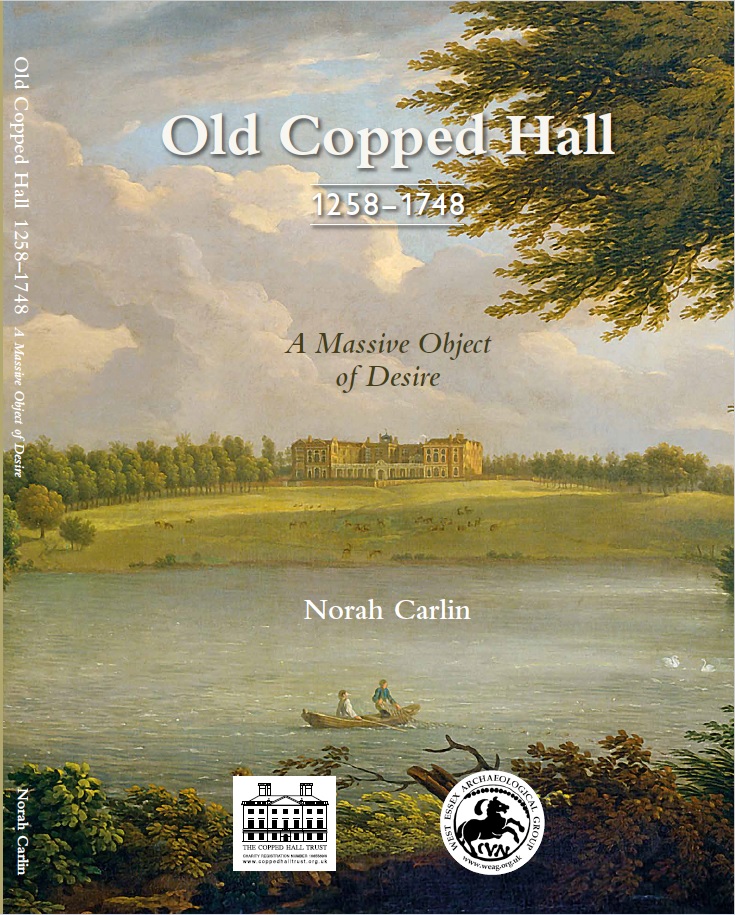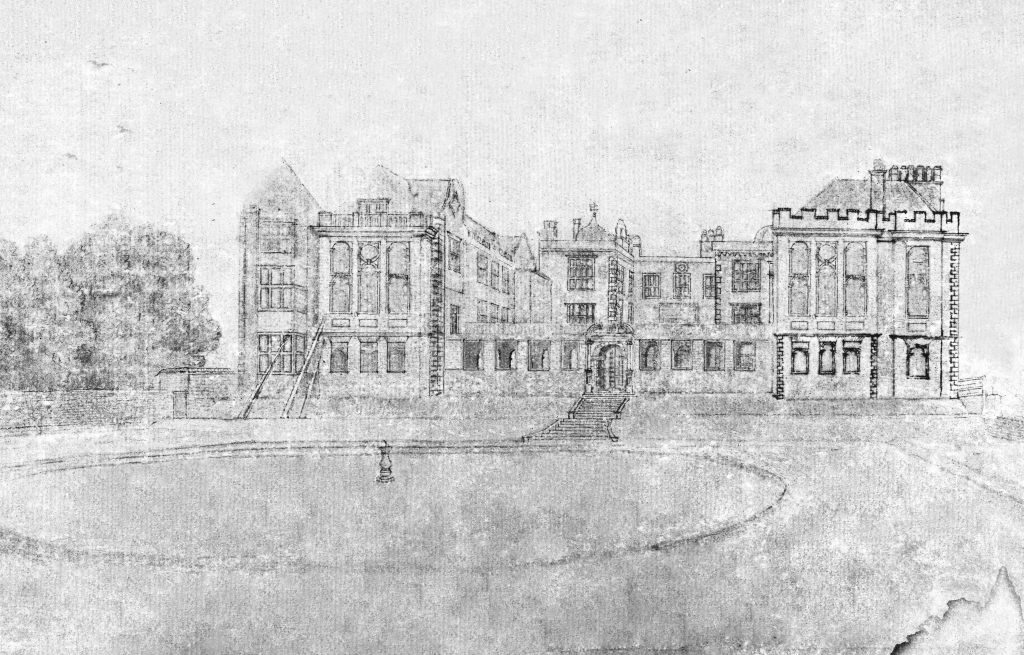A new book about the history of the Old Copped Hall from 1258 to 1748 has been written by Norah Carlin has been published by WEAG, on behalf of the Copped Hall Trust Archaeological Project, in collaboration with the Copped Hall Trust.

The book covers the history of Copped Hall from 1258, when the first surviving documents describing it were written, through to its demolition in the 1750s. This is the building that came into the ownership of King Henry VIII a few years before the dissolution of Waltham Abbey, and was then passed to his daughters Queen Mary I and Queen Elizabeth I. Its last owner, John Conyers, had it demolished, to be replaced on a nearby site by the Georgian mansion that we see under restoration today. But the former mansion was every bit as grand. Over 500 years, perhaps longer, it had grown from a simple manor house to the magnificent building in the illustration on the book’s cover, and in a drawing shown below, made just before demolition.

The book’s author is Norah Carlin, a retired history lecturer and WEAG member. Norah’s previously published works are highly regarded accounts of social change in England from the 17th onwards. The book grew out of the documentary research that WEAG undertook as part of the excavation of the site over the past 20 years. It goes a lot further and deeper than previous histories of the site. Norah has examined many documents (some in Latin) in national and regional record offices and archives. But while the book is a treat for professional researchers with its detailed sources and footnotes, it is no dry history. Norah has brought the building to life by describing its owners and their colourful lives, and she has brought together, for the first time, many delightful colour illustrations from national art galleries, museums and private collections. Amongst other things the book contains contemporary portraits of all but one of the owners of Old Copped Hall from King Henry VIII onwards (there seem to be no extant portraits of the “missing” owner!).
Norah discusses the evidence for several of the stories that have grown up about Old Copped Hall. For example, did King Henry VIII pace the gardens at Copped Hall waiting for confirmation of Anne Boleyn’s execution, and was Shakespeare’s “A Midsummer Night’s Dream” first performed there? You will have to buy the book to find out what evidence Norah has found for and against these stories!
The book has 160 pages in paperback form, with 60 illustrations, three quarters in full colour. It has been created to exacting standards by professional designer/printers.
The book is available from WEAG for £20, with a further charge of £5 for postage and packing (one payment for up to three copies) if needed.
This is a limited edition, so “buy now while stocks last”. It would make an excellent Christmas present.
To buy a copy, and for further information, email weagbook@outlook.com
